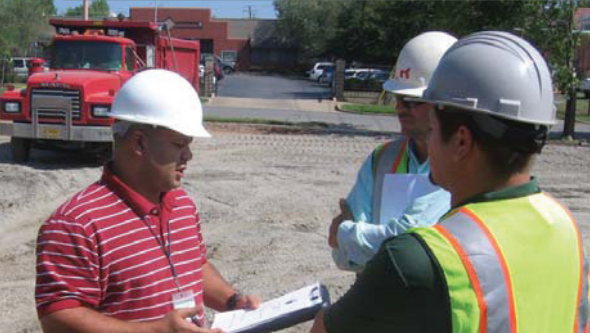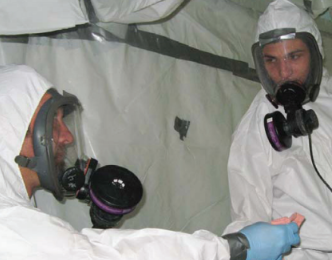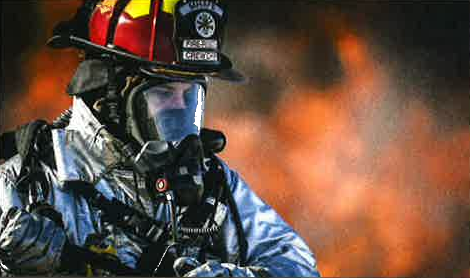1 in 4 Americans don't know if their home has Asbestos.
According to the U.S. Census Bureau 2019 American Community Survey, more than half the houses still standing today were built before 1980, and are likely to contain asbestos in its materials.
Asbestos for Contractors
Asbestos, once a common component in insulation, flooring, ceiling tiles, shingles, and siding, is known for its durability. However, it's also linked to significant health risks when disturbed. Identifying and managing asbestos is critical during any renovation or demolition project to protect health and the environment.
Asbestos for Municipal Officials
Asbestos may be found in insulation, flooring, ceiling sections, shingles, or siding. Health studies have linked asbestos fibers to serious health problems. The mere presence of asbestos in a building is not an immediate risk to people and the environment; however, danger exists when asbestos material is damaged or improperly removed and releases fibers into the air.
Asbestos for Fire Departments
During a fire, firefighters can be exposed to a broad spectrum of building materials and in older buildings some of these materials can contain asbestos. Fires may cause non-friable asbestos materials (materials in which the asbestos fibers are not easily broken apart) to become friable so firefighter exposure to a hazard such as asbestos warrants special consideration and procedures.
Frequently asked Asbestos Questions
Asbestos exposure becomes an issue if asbestos containing materials become airborne, such as due to deterioration or damage. Building occupants may be exposed to asbestos, but those most at risk are persons who purposely disturb materials, such as maintenance or construction workers. Housekeeping or custodial employees may be at an increased risk as they may potentially clean up damaged or deteriorated asbestos containing materials without knowing that the material contains asbestos. Asbestos abatement or remediation workers and emergency personnel such as firefighters may also become exposed. Asbestos-related diseases have been diagnosed in asbestos workers' family members, and in residents who live close to asbestos mines or processing plants.
Today, in the United States, asbestos can regularly be found in manufactured and/or imported products. Asbestos began being phased out of building products beginning in the 1970s, with another major effort being made in the 1980s. Even with an asbestos ban in place, however, asbestos may be found in many buildings today. Residential building materials containing asbestos include a variety of products, but not limited to, the following: stipple used in textured walls and ceilings, drywall joint filler compound, asbestos contaminated vermiculite, vinyl floor tile, vinyl sheet flooring, window putty, mastic, cement board, asbestos cement pipes and flues, furnace tape, and stucco. Asbestos is widely used in roofing materials, mainly corrugated asbestos cement roof sheets and asbestos shingles sometimes called transite. Other sources of asbestos-containing materials include fireproofing and acoustic materials.
A fiber cannot be identified or ruled out as asbestos, either using the naked eye or by simply looking at a fiber under a regular microscope. The most common methods of identifying asbestos fibers are by using polarized light microscopy (PLM) or transmission electron microscopy (TEM). PLM is less expensive, but TEM is more precise and can be used at lower concentrations of asbestos. If asbestos abatement is performed, completion of the abatement is verified using visual confirmation and may also involve air sampling. Air samples are typically analyzed using phase contrast microscopy (PCM). PCM involves counting fibers on a filter using a microscope. Airborne occupational exposure limits for asbestos are based on using the PCM method.
Do you suspect you have asbestos in your home? We want to help!

Brian Suggs
Your IICRC Trained Pro
For many years people have known that our indoor air quality is getting worse, but only recently has there been resources like the IICRC where you have the opportunity to hire a trained professional who can evaluate and assess the quality of life inside your home.
My inspection services include Indoor Air Quality and Mold sampling, environmental inspection, drainage inspection, crawl space assessment, and lab testing for mold and asbestos. I then create a hypothesis and protocol that a professional remediation company of your choice will follow to remedy any problems found.
See why hundreds of people trust us.
Reliable Mold Inspection Saves Home Sale
In the process of selling our home, the buyers had their home inspector do a mold inspection. The report came back indicating fairly high levels of aspergillus mold. This killed the deal with the buyers. We immediately contacted NWA Mold Inspector to have a complete mold inspection done. Brian Suggs came out within a day or two. He did a complete mold inspection, very thorough, very professional. NO abnormal levels of any mold were found. Home inspectors are not qualified and/or certified to follow the protocol necessary to do a mold inspection. It is very easy to contaminate samples when not following the correct procedures. Brian was very quick to to react to our situation. If mold HAD been found, he was ready and able to get us with the right people with a remediation solution. Thankfully, we didn’t have to do that. We had our house back on the market with a few days and sold quickly. I highly recommend Brian for a thorough, professional and timely inspection.
Brian went above and beyond to assess my situation with a free initial phone consult and provided incredibly detailed and helpful knowledge to set me well on my way. His customer service is excellent and you can tell he truly cares about the wellbeing of his customers. Thank you Brian
Great company. Brian answered my call when I considered it to be "after hours". Brian had me send him some pictures of the areas in concern, and gave me suggestions to follow until he could arrive. Brian then gave me an estimated time of arrival. He was prompt to keep his appointment time and let me know prior to his arrival. Brian was very professional and polite, also very educated in his field.
Brian was great - he was able to squeeze me in the day after I called after a slight panic of having possibly disturbed unknown asbestos in our new home with popcorn ceilings. He was quick, thorough, competitively priced and we had our results the next day!
Commercial and Industrial
Experienced working in occupied settings, I hold 17 credentials and licenses and am OSHA Certified.
Asbestos
Asbestos is most dangerous when airborne, which can occur from deterioration or damage. Today, in the United States, asbestos can regularly be found in manufactured and/or imported products.
CIRS
Mold is a serious issue that can have a negative impact on your health, especially if you suffer from Chronic Inflammatory Response Syndrome (CIRS). I understand the importance of a mold-free environment.
Do you suspect you have asbestos in your home? We want to help!








